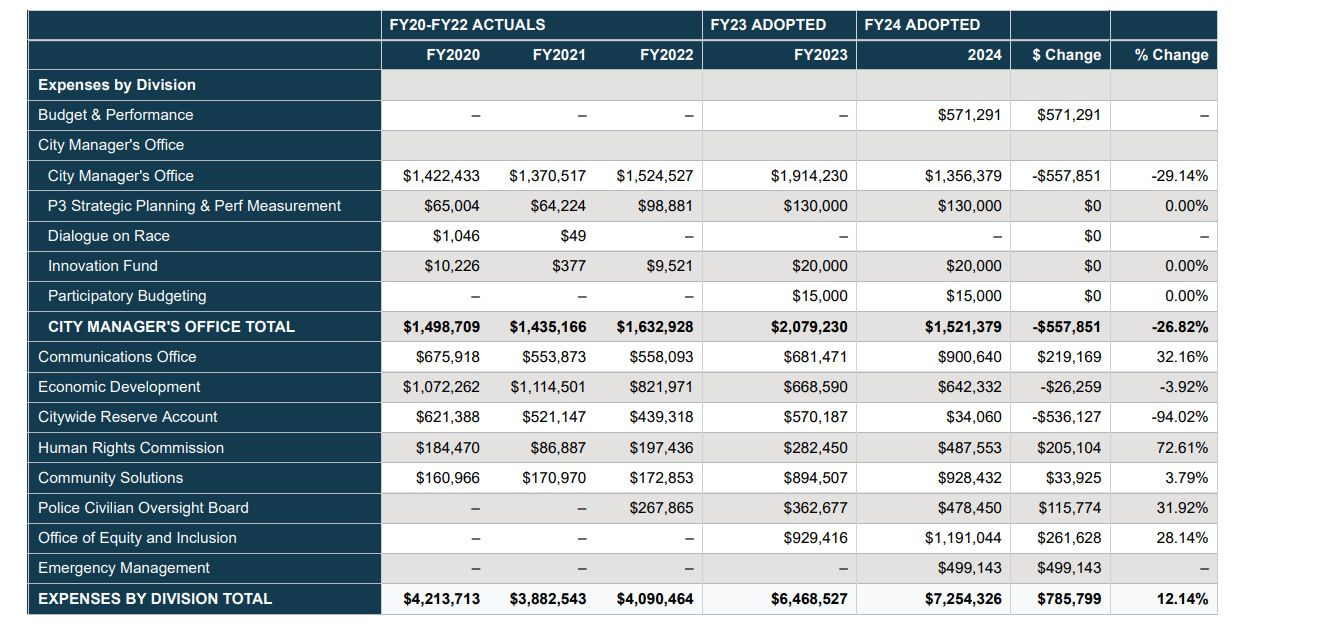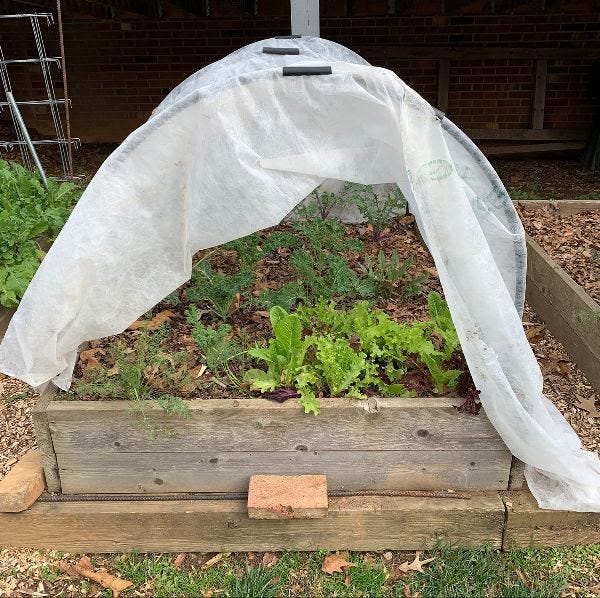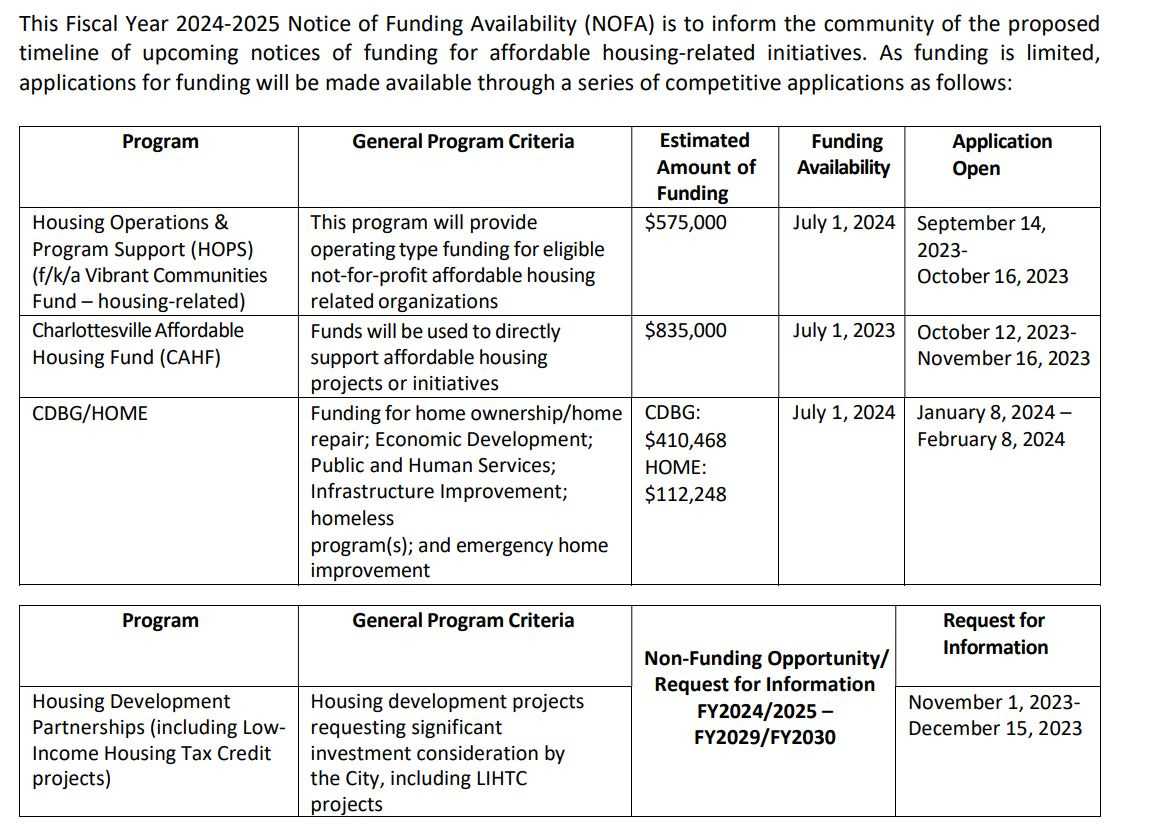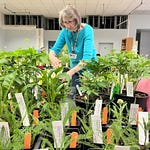Eleven months into the year with holidays on the horizon now as pumpkins give way to all manner of other decorations. For many, the pending merriment provokes a sense of anxiety. That’s as good a time as any to mark National Stress Awareness Day on this November 1. Perhaps this edition of Charlottesville Community Engagement will prepare you for the time ahead. I’m Sean Tubbs, and probably not.
On today’s program:
The final campaign finance reports are published showing another high level of activity in the at-large Albemarle School Board race
Turnout in early voting in Charlottesville is well below the state average in Virginia
Charlottesville has solicited information from developers who would like to partner to build affordable housing
There are several vacancies on Charlottesville boards including four seats on the Human Rights Commission
Charlottesville City Council gets brief lesson on recent population trends and forecasts from the Weldon Cooper Center at the University of Virginia
First shout-out: Extending the Season with the Piedmont Master Gardeners
In today’s first subscriber-fueled shout-out: There’s a sudden dip in temperatures, but that doesn’t mean you have to stop growing some of your late fall vegetables. At 2 p.m. Saturday, November 18, the Piedmont Master Gardeners and Virginia Cooperative Extension will present “Season Extenders in the Edible Garden,” a free Garden Basics class on how to use crop choice, garden layout and row covers to grow fresh produce into the winter.
The class will take place at Trinity Episcopal Church, 1118 Preston Avenue in Charlottesville, and will include a hands-on demonstration of how to position and secure row covers. Register at https://piedmontmastergardeners.org!
Final campaign finance numbers are in before election; Early voting turn-out low in Charlottesville
The polls close on the 2023 elections in less than six days and the final set of campaign finance reports have been filed before ballots will be counted. Thanks as always to the Virginia Public Access Project for their doing the heavy-lifting to make this accessible to the public.
Before we get to campaign finance, turn-out appears to be lower than the last General Assembly election in 2021. In Albemarle, 9,441 people have voted as of October 31 and that is at a rate of 111.7 voters per 1,000 registered voters. That’s a higher figure than the rest of Virginia where the turnout rate in early voting is 96 per 1,000 registered voters.
Turnout is down sharply in Charlottesville compared to the rest of the state with 73.5 ballots cast per 1,000 registered voters. That’s 2,482 votes. There are no contested local races in Charlottesville.
There are two Supervisor races in Fluvanna and both are contested and the early voting rate there is 121.6 ballots cast per 1,000 registered voters. More on those races tomorrow, as with everything else not Albemarle.
Louisa County has three Supervisor seats on the ballot and the rate there is 102.4 ballots cast per 1,000 registered voters. Greene County also has three Supervisor races and the figure there is 104.1 per 1,000 registered voters.
Two Supervisor seats are up for election in Nelson and the early voting there is measured at 115.4 ballots cast per 1,000 registered voters.
Mallek raises and spends $26K in White Hall race; Fadeley outraises LaPisto Kirtley in October
The latest campaign finance reporting period covered October 1 through October 26 and is the last mandatory report before the election unless a candidate receives a large donation. (Note: The VPAP links here will only be valid a brief time)
In the Rivanna District race, incumbent Democrat Bea LaPisto-Kirtley faces independent challenger T.J.Fadeley.
Fadeley raised $7,675 in the 26 days covered in the new period with $5,000 coming from Richard and Diana Beyer, and another $2,000 coming from the Albemarle County Republican Committee.
The candidate spent $8,740 with much of that being in advertising with $2,500 to Daily Progress publisher Lee Enterprises, $2,586 to Monticello Media, and $2,533 to Charlottesville Radio Group. Another $742 went to Rob Schilling, a former Charlottesville City Councilor who is a radio host on WINA.
In contrast, LaPisto-Kirtley raised $1,100 and spent $4,232 with no large local advertising buy. A $2,000 payment went to Lifeview Marketing.
Incumbent Democrat Ann Mallek faces independent Brad Rykal in the White Hall District.
Mallek raised $27,649 in the period including a $10,000 contribution from the Virginia Future PAC and a $5,000 contribution from author John Grisham. She spent $27,675 in the period including $21,576 on the Blue Ridge Group for advertising including advertising placement in local media.
Rykal raised $2,015 in the period and spent $1,772 in the period with $523 of that in social media posts brokered through Meta.
Democrat Mike Pruitt is the lone candidate in the Scottsville District race to succeed outgoing Supervisor Donna Price. Pruitt raised $1,783 and spent $220.
Spillman outraises Bryce in October with one person contributing $40K
The most expensive race in Albemarle County history continues as both candidates for the at-large School Board seat had another active period. Prior to October, the campaigns of both Meg Bryce and Allison Spillman had crossed the $100,000 mark.
On October 1, the Spillman campaign had $43,813 in the bank and raised $56,387 in cash and collected another $22,536 in in-kind donations. Sonjia Smith contributed $40,000 in the period with John Grisham giving another $5,000. Prior to this period, Smith had given another $30,000 to the campaign.
An entity called Albemarle Parents Promoting Learning Inc. contributed $21,750 in in-kind donations. The report filed with the Virginia Department of Education lists this as covering the actual cost of direct mail.
The campaign spent a total of $86,040 including $57,500 to LC Media for media. Another $21,675 went to Petel & Company for direct mail services. Spillman had $14,160 on hand on October 26.
Bryce began the month with $51,319 and raised an additional $16,226 in cash and $2,493 in in-kind donations. The cash includes $5,000 from Peter Taylor.
The campaign spent $32,852 in the partial month with $20,000 to Lifeview Marketing, a creator and purchaser of television ads. Another $8,468 went to the firm Creative Direct, a direct mail vendor that specializes in Republican campaigns. The campaign had $34,692 on hand at the close of October 26.
There’s not nearly as much funding in the race for the White Hall seat on the School Board where appointed incumbent Rebecca Berlin faces challenger Joann McDermid.
McDermid’s campaign began the month with $1,199, raised $2,324, and spent $996.
Berlin had $6,961 in the bank on October 1, raised $775, and spent $7,556 with $7,012 of that going to the Democratic Party - State of Virginia. There was $159 in the campaign coffer on October 26.
In the Rivanna District, incumbent Judy Le is the only candidate on the ballot but there is a write-in challenger in Michelle de Stefano.
The de Stefano campaign began the month with $780 and raised $2,375. That includes $2,000 from the Albemarle County Republican Committee. The campaign spent $777 with all but $1 of that going to the Charlottesville Radio Group. There was $2,377 left over.
Le began the month with $933, raised $200, spent $367, and had $765 in the account on October 26.
Like her counterpart in the Supervisor Race, Scottsville School Board member Ellen Osborne has no coordinated opposition. She did not raise any money, spent $270, and had $546 left in the bank.
Charlottesville seeks information on would-be affordable housing developers
Charlottesville’s capital budget for the current fiscal year includes $3 million for public housing redevelopment, and just over $3 million for the Piedmont Housing Alliance for two projects on Park Street.
Both PHA and the Charlottesville Redevelopment and Housing Authority are slated to receive millions more over the next four years, but the city of Charlottesville today has posted another “request for information” to solicit other potential providers for the category known as the Housing Development Partnership Capital Investment Project.
“We invite housing developers and housing providers to provide comprehensive visions into potential projects that align with our city's robust, affordable housing and community development goals from FY2024/2025 – FY2029/2030,” reads a press release sent out this morning.
Unlike other applications for the city’s growing pool of housing funds, this is just looking for new ideas. The last such request helped direct $33.4 million in funds that will be spent through FY2028, according to the release. Under Virginia law, elected bodies cannot guarantee spending beyond the current fiscal year.
There is no set amount of funding in the notice but the window for applications to be considered closes December 15. (apply here)
The CRHA has already signaled it wants $15 million to help prepare for the development of Westhaven. (read my story from October 1, 2023)
City seeking applicants for Human Rights Commission
Charlottesville City Council agreed to fund two new positions this year in the Office of Human Rights with $101,233 set aside for an investigator and $79,845 for someone to do administrative support. That makes for a total of four full-time equivalents to an entity that reports to the City Manager’s office.
The budget assigned to the Human Rights Commission has grown from $184,470 in FY2020 to $487,553 in the current fiscal year.

With that in mind, there are currently four vacancies on the Human Rights Commission and the city is looking for people to apply.
According to the press release, the primary purpose of the HRC is to make recommendations to Council.
“The HRC used its public platform to host discussions on topics ranging from state-level legislation affecting housing affordability to the recent proposed expansion of emergency shelter for people experiencing homelessness,” reads the release. “Following the appointment of new Commissioners this December, the HRC will meet to develop its priorities for the next year.”
Would-be applicants have until December 8 to apply. Here’s the application.
There are also vacancies on the following groups:
Four positions on the Board of Architectural Review with each reserved to represent a specific constituency (learn more)
Three full-time members and one alternate for the Board of Zoning Appeals (learn more)
Three members of the Charlottesville Affordable Housing Fund Committee, all of whom must be beneficiaries of affordable housing funding. There’s a fourth position as well for an at-large resident (learn more)
There are three vacancies on the Charlottesville Historic Resources Committee (learn more)
There’s one vacancy on the Planning Commission that has been unfilled since a resignation in June. Council has had applicants but has not been satisfied with them. Maybe it’s you? (learn more)
Second shout-out: Community Bikes meets goals for 2023
In today’s second subscriber–supported shout-out: The organization Community Bikes has announced it has surpassed its goal of distributing bicycles for both kids and adults! They want to express their heartfelt thanks togo out those who have kept bike donations rolling through their doors. They also want to express endless gratitude to the staff and volunteers who lovingly restore donated bikes, ensuring they are safe for their new owners. To find out more and learn about the recent donation of a new van donated by Geico, visit communitybikes.org!
Council briefed on population figures
The Charlottesville City Council is holding a series of work sessions leading up to their December 5 public hearing on the Development Code. On October 11, the four elected members and the one appointed got an update on population trends for Charlottesville and surrounding areas.
Hamilton Lombard of the Weldon Cooper Center for Public Service chronologically began his presentation around 1963, which is the last major time in which Charlottesville took control over land that had been in Albemarle County.
The city’s population in the 1960 U.S. Census was 29,427 and increased to 38,880 in 1970 mostly because of the acquired territory.
“If we looked at the population of Charlottesville over the last few decades, we had a very stable population in the city really beginning with when the annexation stopped,” Lombard said. “We had some infill. At the same time we had a lot of families leaving the city. The newer developments were out in the suburbs.”
The population remained flat for the next 20 years with a 1980 count of 39,916, a 1990 count of 40,314, and a 2000 count of 40,009.
“Then we had the rezoning 20 years ago which up-zoned some areas around UVA, particularly West Main Street,” Lombard said. “And that’s when growth resumed.”
Lombard said that led to further growth with a 2010 Census count of 43,475 and a 2020 figure of 46,553. However, that one comes with a big asterisk.
“We had the 2020 Census which was conducted on April 1, 2020 and that turned out to be about the worst time you could have because you have the pandemic, and UVA is closed,” Lombard said. “The Census count is about 46,000 people in the city. My office produces its own estimate for the city’s population and that goes into the state funding formulas and that was the city’s population of a little over 50,000 instead.”
Lombard’s office predicts several more thousand will call Charlottesville home in the years to come. The Weldon Cooper Center projects a population of around 53,000 by 2030 if their assumptions are correct.
Councilor Leah Puryear asked if Council’s upcoming vote on a new zoning ordinance will affect the rate of growth.
“Do you perceive that the growth will happen with or without a zoning change, or do you perceive that because of a potential zoning change that will be the driver in the increase in population?” Puryear asked.
Lombard said the Weldon Cooper Center uses the same methodology across the Commonwealth and doesn’t model their numbers based on land use decisions. A major factor in their calculations is the age of the current population.
“What we’re looking at the past growth trends and really looking at age distribution,” Lombard said. “Charlottesville is relatively young and that means it has more births and fewer deaths. And that drives along growth regardless of some of these other factors.”
You can’t look at just one locality in isolation. In times when Charlottesville is not growing, Lombard said surrounding counties tend to pick up more of the population growth.
“Albemarle County’s population doubled from 1970 to 2000, and Fluvanna and Greene tripled,” Lombard said. “That’s spillover growth going out of Charlottesville into the rest of the area.”

The UVA student population plays a big role in the city’s demographics, as demonstrated in the 2020 Census undercount. Lombard said enrollment increased by 5,000 or so since 2000 with half of that increase living in the city of Charlottesville. However, he said the region’s growth is more affected by being relatively close to bigger places.
“Overall when we look at Charlottesville’s growth compared to the rest of Virginia, a lot of it is being driven by its proximity to northern Virginia,” Lombard said. “There’s about a quarter million people who move out of D.C. year to year.”
Lombard said that could be remote workers seeking a more affordable place to live that’s close enough to travel to the office when needed.
Which raised a question. If the city upzones, will that create another population boom? And for whom?
“If you build it, they will come,” said James Freas, the city’s director of Neighborhood Development Services. “Well, it’s more complex than that… because they’re going to come anyway and displace the people who are already here.”
“Because they’ve got so much wealth,” said City Councilor Brian Pinkston.
“They’ve got a million dollar house that they can sell and come in here and displace somebody else,” Freas said.
Freas said building more places to live decreases the likelihood of displacement.
Vice Mayor Juandiego Wade said that only a few entities will be willing to build the deeply affordable housing that’s recommended in the Affordable Housing Plan.
“I’m just trying to put all of this together because I know we need a lot of different housing types but the majority of upzoning because there is not a lot of money going to deeply affordable housing, they’re going to build the half million homes so that the people of northern Virginia get a discount.”
Pinkston said the goal of the Medium Intensity Residential designation in the Future Land Use Map is for the “missing middle.”
“The missing middle is not for million dollar homes,” Pinkston said. “Hopefully it’s for people like my kids.”
Freas said the city is hoping for a wider range of options, but that the market relies on what it can bear in rent or sales in order to justify new construction without subsidization.
“New construction is always going to be at the upper end of the market,” Freas said. “That’s just a fact. That’s how new construction works, but in the face of population growth, the more options we create the new construction is going to draw in the highest value and the existing construction then becomes available rather than that getting drawn into the high-end market.”
Freas likened this to a game of musical chairs in reverse.
Mayor Lloyd Snook pointed out that other communities set a target date in their Comprehensive Plans, but the Cville Plans Together initiative had not. For instance, Albemarle County is planning for a 20 year horizon in the AC44 process.
“At some point, and maybe this is that point, we need to decide what we’re planning for,” Snook said.
Snook said knowing what the population might be would be helpful but said it’s only an output.
Pinkston had this guesstimate.
“I would personally say 75,000 people will be here in 2050 based off of these rates,” Pinkston said.
Wade said he could see those numbers coming into fruition. Puryear was not so sure.
“I think that’s a little high,” Puryear said. “Don’t you, 75?”
Puryear questioned whether there is enough space to build room for that many people even with the additional building space that will be allowed in the future after the Development Code is adopted.
“The idea of the zoning map is to get as much as flexibility to get as high as possible,” Pinkston said.
“I don’t disagree but I’m saying that at a certain point, you’ve run out of land, even if everything you build between now and eternity is 15 stories, there’s only so much space,” Puryear said.
The conversation continued, as it will continue to do so. There’s a work session tonight on the anti-displacement overlays that are now in the draft code at the request of the Housing Advisory Committee.
Reading material:
Gordonsville man charged with fatal downtown Charlottesville shooting, Hawes Spencer, Charlottesville Daily Progress (paywall), October 24, 2023
Robert E. Lee statue that prompted deadly protest in Virginia melted down, Associated Press via ABC News,October 27, 2023
Albemarle schools and teachers union return to negotiating table, Jason Armesto, Charlottesville Daily Progress (paywall), October 23, 2023
In Louisa County, Board of Supervisors candidates share their views on property taxes, solar farms and flooding, Jessie Higgins, Charlottesville Tomorrow, October 24, 2023
New transient occupancy tax passes, Heather Michon, Fluvanna Review, October 26, 2023
CAT launches rideshare service in 29 North and Pantops, Felicity Taylor, CBS19, October 30, 2023
Violet Crown's new owner details plans for Charlottesville theater, Reynolds Hutchins, Charlottesville Daily Progress (paywall), October 23, 2023
Voter Guide: Q&A with the 2 candidates vying to represent the Rivanna District on Albemarle County’s Board of Supervisors, Charlottesville Tomorrow, October 31, 2023
What does #594 have to say about itself?
Here we are again at the end of another edition of a newsletter that in a perfect world would be a 24-hour news service, but we live in the world where the 24-hour news services generally talk about one topic per hour. If this newsletter were to focus on topic what would you prefer? Transportation? Land use? Economic Development? Housing?
I’d argue that all of those issues are central to the main goal of Charlottesville Community Engagement, which every single day might have a slightly different focus based on how the stories come together. And as these keep getting made, more people will begin to work with them! This edition was reviewed by a copy editor, a copy editor I’m paying!
I’m able to do that because more of you keep subscribing and about a fifth of you are paying! If you want to contribute, today’s a great day! If you pay $5 a month through Substack, $50 a year through Substack, or $200 a year through Substack, Ting will match your initial payment.
Ting supports a lot of great work and great spaces here, and if you’re in the market for high-speed Internet, give them a try!
Maybe you’re in the market for a new high speed internet provider? If so, check out Ting! If you sign up for Ting at this link and enter the promo code COMMUNITY, you’ll get:
Free installation
A second month for free
A $75 gift card to the Downtown Mall
-

















Share this post